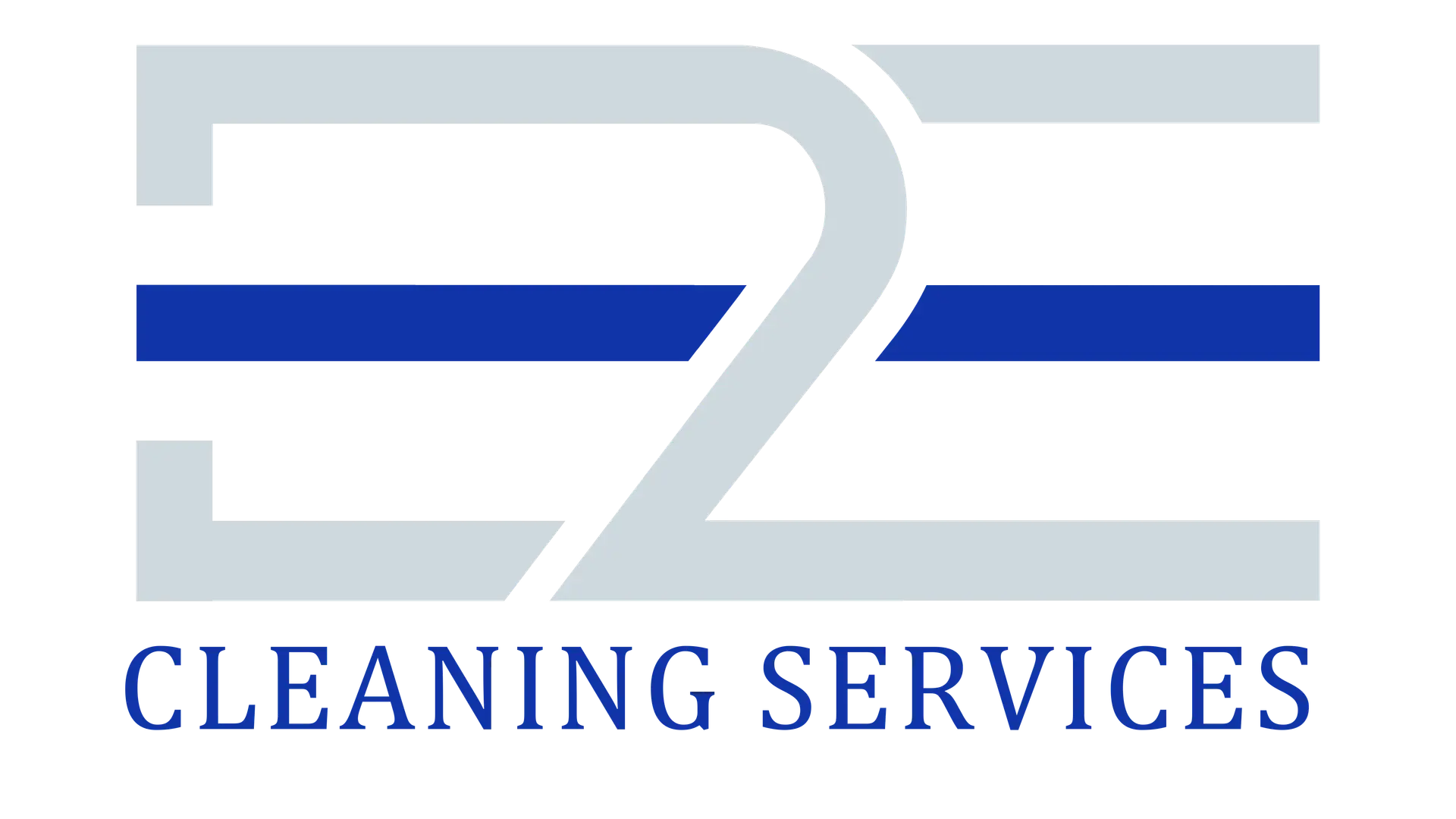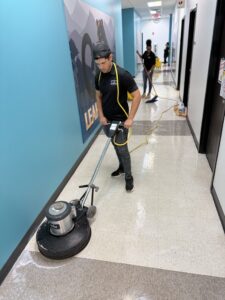This guide is a detailed description of the specific sanitization needs of medical facilities in Florida, considering the peculiarities of the state regulatory environment and climate challenges.
It discusses the latest cleaning strategies, incorporating the day porter services, compliance systems, and technology that protects patients and guarantees complete adherence to state and federal regulations.
Florida facility managers and cleaning service providers will be able to find practical healthcare-specific protocols to follow.
Introduction to Florida Healthcare Sanitization Requirements
The Florida healthcare industry is constantly faced with unique circumstances that require unique sanitization measures. The climate of Florida is humid and temperate, which creates favorable conditions in the development and spread of pathogens. Together with the vast healthcare infrastructure of the state that provides services to a substantial population with high medical demands, these environmental features require increased vigilance to avoid healthcare-associated infections (HAIs).
Understanding these conditions is thus an essential aspect of coming up with effective sanitization measures.
The regulatory system for healthcare facilities in Florida is complex. It is a combination of requirements from the federal Centers for Disease Control and Prevention (CDC) and state-specific requirements. New laws have further strengthened these requirements especially in terms of documentation, personnel qualification and frequency of inspection.
These requirements are enforced by the Florida Agency for Health Care Administration (AHCA) who conducts regular audits and compliance checks.
The impact of the climate of Florida on sanitization can hardly be overestimated. The annual average humidity is regularly over 70 %, which promotes the growth of molds and bacteria at a much faster rate than in dry areas.
Healthcare facilities will therefore need to adopt:
- Increased sanitization rates
- Specially designed products for high-humidity areas
- Improved maintenance of ventilation system
- Regular checking of the growth of mold in patient care sections
Moreover, Florida is a prime tourist attraction, which means that there is an elevated risk of bringing in new pathogens due to incoming tourists, which is why the control of infections should be approached with greater responsibility.
Medical centers should therefore adopt total sanitization systems that are responsive to these geographic and demographic realities and still be in line with the changing regulations.
Advanced Sanitization Protocols for Medical Facilities
The foundation of successful sanitization of healthcare facilities is evidence-based cleaning methodologies. The sanitizing procedures in the medical settings in Florida should be designed in a zone-based system where the areas are classified according to the risk level.
Critical Care Zones (Operating rooms, ICUs, isolation rooms):
- Cleaning of the terminals after every patient
- Broad-spectrum efficacy hospital-grade disinfectants
- Proven efficacy sanitizers against C. difficile spores registered with EPA
- UV-C light treatment daily together with manual cleaning
High-Touch Patient Areas (Exam rooms, waiting areas):
- Between patient encounters, sanitization is done.
- Pay attention to horizontal surfaces and equipment touching several patients
- Disinfectants that are based on quaternary ammonium or hydrogen peroxide
- Microfiber cloth systems that are color coded to avoid cross-contamination
Administrative and Support Areas:
- The shared equipment (printers, phones) should be sanitized daily.
- Cleaning of break rooms and employee spaces Regularly
- Deep cleaning of all surfaces once every week
- Air-quality HEPA filtration systems
Sanitization procedures should be well timed and calibrated to facility operations. Areas with high traffic need constant care using day porter services, but special treatments, like electrostatic spraying or UV-C disinfection, are usually performed outside of peak hours to avoid disrupting operations and allow the necessary contact time.
To prioritize high-touch surfaces, a risk-based hierarchy approach should be adopted in the facilities, where the priority should be given to the so-called patient zone, i.e., surfaces within a 6-foot radius around patients that pose the greatest risk of transmission.
These include:
- Controls and bed rails
- IV poles and IV pumps
- Telephones and call buttons
- Light switches and door handles
- Patient rooms bathroom fixtures.
Cleaning checklists are in place to ensure that these critical surfaces receive proper attention during every cleaning cycle. This is validated by ATP testing or fluorescent marking systems..
Day Porter Services Integration
The introduction of continuous cleaning in the form of day-porter services is a definitive break with the after-hours cleaning patterns that have been traditionally employed in healthcare facilities. This active model positions trained environmental services workers within the facility during normal working hours, thus allowing prompt response to contamination incidents and maintaining high levels of hygiene.
Advantages of continuous cleaning as compared to scheduled maintenance are:
- Real-time reaction to biohazard spill and contamination incidents
- Instant focus on high-touch surfaces during the working hours
- The presence of cleaning that gives confidence to patients and staff
- Less work on night cleaning crews
- Continuous environmental monitoring opportunity
Day porters must have special training beyond the minimum requirements of the typical environmental services personnel. It should include facility-specific and relevant certifications regarding the category of the healthcare facility:
- OSHA Bloodborne Pathogens certification
- Healthcare-specific cleaning protocols
- Use and disposal of PPEs properly
- Handling and safety of chemicals
- Preventive methods of cross-contamination
- Etiquette in dealing with patients
The day porters in the medical facilities in Florida also need to be trained to handle the unique challenges that are presented by the climate in the state such as faster growth of bacteria and molds.
Employees should become acquainted with the Florida Administrative Code Chapter 64E-16, the regulations that regulate biomedical waste management, and which provides detailed specifications of waste segregation, packaging, and disposal.
Real-time response procedures are an essential part of day-porter services, which allow acting instantly in a wide range of contamination situations:
- Spills of body fluids: Contain, clean and disinfect with EPA-registered products that have bloodborne pathogen kill claims
- Airborne isolation: Introduce additional cleaning procedures in rooms occupied by patients with airborne infectious illnesses
- Surge cleaning: Clean more often during rush times or epidemics
- Terminal cleaning coordination: Readiness of rooms to deep clean after discharge of patients
Successful day-porter services within healthcare facilities operate under a zone system whereby staff is assigned to a particular area based on the risk profile and the frequency of cleaning. This structure will allow uniform coverage and at the same time allow specialized training based on the unique needs of every environment.
Medical Office Cleaning Standards
Patient care sections in medical facilities must be subjected to the best sanitization practices. Such settings should be exposed to hospital-level disinfectants and cleaning procedures to combat both visible dirt and microbial contamination.
The general guidelines on patient care areas are:
- Use of top-to-bottom cleaning strategy to avoid recontamination
- Special consideration of procedure rooms during patient visits
- Conducting appropriate disinfection of the surfaces of medical equipment
- Using microfiber cloths and mops which trap instead of redistributing pathogens
- Following the contact time requirements of disinfectants (normally 2-10 minutes)
Exam rooms require special attention, and thorough cleaning is carried out after each patient. The procedures include the disinfection of exam tables, changing the table paper, sanitizing all the equipment that will come in contact with the patient, and the thorough cleaning of horizontal surfaces where the droplets can settle.
Though administrative areas are associated with fewer risks of infection, they must be regularly sanitized to avoid cross-contamination and ensure the overall facility hygiene. The general guidelines to these areas are:
- Regular cleaning of high-touch surfaces (keyboards, phones, door handles)
- Dusting of horizontal surfaces frequently to eliminate possible pathogen reservoirs
- HEPA filtered vacuum cleaning of carpets
- Break rooms and common areas should be given special attention
- The handling of waste with special consideration to paper records that have PHI
Florida has a very strict biomedical waste management, including Chapter 64E-16, F.A.C. Medical facilities should have good separation of waste streams, with containers, labels, and disposal records. Day porter and environmental services personnel should be well trained on the identification and management of various waste types such as:
- Red bags and special containers biohazardous waste that needs them
- Sharps that need puncture-proof containers
- Drugs that need special disposal procedures
- Normal waste that has been well segregated with infectious waste
Sanitization of specialized equipment poses specific issues in health care facilities. Florida healthcare institutions should introduce particular procedures related to various types of equipment:
- Diagnostic equipment: Specific instructions of manufacturers with compatible disinfectants
- Reusable medical equipment: Sterilization or high-level disinfection according to the FDA guidelines
- Electronic equipment: The proper sanitization procedures that do not cause damage
- Shared workstations: Frequent cleaning of keyboards, mice and touchscreens
Biomedical waste management in Florida is particularly strict, and it is regulated by Chapter 64E-16, F.A.C. The facilities are required to strictly separate the waste streams, should have proper containers, labelling, and disposal records. Day porter and environmental services personnel should be well trained on the identification and management of various waste types, which include:
- Red bag and special container for biohazardous waste
- Sharps that need puncture-resistant containers
- Pharmaceutical waste that needs special disposal procedures
- Ordinary wastes which have been well separated with infectious materials
Get professional day porter services that ensure continuous sanitization compliance. Click Here
Hygiene Standards Compliance
Florida medical facilities have to navigate a number of regulatory frameworks to achieve compliance with sanitation standards. The Joint Commission is one of them and requires Environment of Care (EOC) standards that address cleaning, disinfection, and sterilization practices. These standards must have:
- EC.02.06.01-Safe and functional environment
- IC.02.02.01-Infection prevention and control activities implementation
- Cleaning records and routines
- Risk assessment and response planning
- Routine validation and testing of the environment
CDC guidelines implementation focuses on evidence-based practices in the prevention of healthcare-associated infections. Health facilities should implement the CDC recommendations on:
- Environmental cleaning and disinfection
- Infrastructure and monitoring of hand hygiene
- Specific pathogen transmission precautions
- Training and validation of competency of environmental services staff
- Choice of suitable disinfectants against particular pathogens
The Florida Department of Health provides one more level of compliance requirements that are specific to the challenges of the state. These are:
- Facility-based risk-based inspection schedules
- The documentation needed on cleaning procedures and employee training
- Compliance with biomedical waste management
- Water management schemes to deal with the risk of Legionella
- The requirement to report some cases of infectious diseases
The demonstration of compliance is still based on documentation. Facilities should be able to keep:
- Cleaning schedules and logs of completion
- Records and competency assessments of staff training
- Inventory management and product usage
- The results of environmental monitoring (ATP testing, culture results)
- Documentation of corrective action to the identified deficiencies
Good compliance plans incorporate these requirements into the daily business instead of viewing them as a distinct administrative burden. Electronic documentation systems are technology solutions that facilitate compliance and give real-time insight into the performance of environmental services.
Technology and Equipment Solutions
The use of advanced disinfection systems has completely transformed the concept of healthcare environmental services and has enabled them to reduce pathogens in a more comprehensive manner with greater efficiency. Some of the notable technologies are:
- UV-C light disinfection systems: The systems offer no-touch terminal disinfection to surfaces that could not be reached during manual cleaning, especially in operating rooms and isolation rooms. UV-C technology can decrease the pathogen loads up to 99.9% by using ultraviolet radiation.
- Electrostatic sprayers: These are machines that charge the disinfectant droplets to a positive charge so that they stick to negatively charged surfaces. This system provides comprehensive coverage of the inaccessible sites and the rough surfaces.
- Hydrogen peroxide vapor systems: These systems produce a vapor that permeates all surfaces and destroys even the most tenacious pathogens, including Clostridium difficile spores, in rooms that need the greatest degree of disinfection.
- HEPA filtration systems: The most important in minimizing the load of airborne pathogens, particularly in procedural areas and rooms in which immunocompromised patients are located.
The monitoring and verification tools provide objective data of the effectiveness of cleaning, not only visual, but measurable data:
- ATP (Adenosine Triphosphate) test: This tests the biological residue on surfaces as an indicator of cleaning performance, which provides real-time feedback to employees.
- Fluorescent marking systems: Enables the supervisor to mark surfaces prior to cleaning and check them afterwards to see where they have missed and where they need training.
- Environmental sampling: Sampling of high-risk surfaces periodically by culturing to identify possible reservoirs of pathogens.
- Air quality monitoring: This is especially significant in the humid climate of Florida to identify any possible mold problems before they become a problem.
Documentation and reporting systems have been developed over the years, starting with paper checklists to more advanced electronic systems that provide:
- Completion tracking in real-time
- Building management system integration
- Automatic regulatory reporting of compliance
- Employee monitoring of productivity
- Monitoring of supply and inventory management
- Leadership quality assurance dashboards
Florida medical facilities ought to take into consideration the following when implementing new technologies:
- Effectiveness validation on the basis of evidence
- Infection reduction as a result of ROI
- The need to train staff and adoption issues
- Connection to the current workflows and systems
- Maintenance and continuing running costs
A combination of traditional manual cleaning and suitable technology solutions is usually the most effective strategy, as there is no single way of sanitizing all the issues in healthcare settings.
Conclusion
Sanitization in the healthcare facilities in Florida requires a complex approach that must meet the unique climatic conditions in the state and the high regulatory standards. Through the adoption of evidence-based protocols, the inclusion of day porter services, effective training, and the use of relevant technologies, medical institutions can establish conditions that protect both patients and staff members against healthcare-related infections.
In the future, healthcare sanitation in Florida is expected to become more automated and monitored in real time to drive continuous improvement. Organisations that adopt a holistic, evidence-based approach to environmental hygiene are well-placed to achieve regulatory compliance, improve patient outcomes, and increase operational efficiency.
As infection prevention becomes an increasingly important aspect of healthcare quality measures, investment in effective sanitation procedures and systems is no longer just a way of meeting compliance requirements; it is a strategic initiative that directly affects patient safety, institutional reputation and financial performance.






